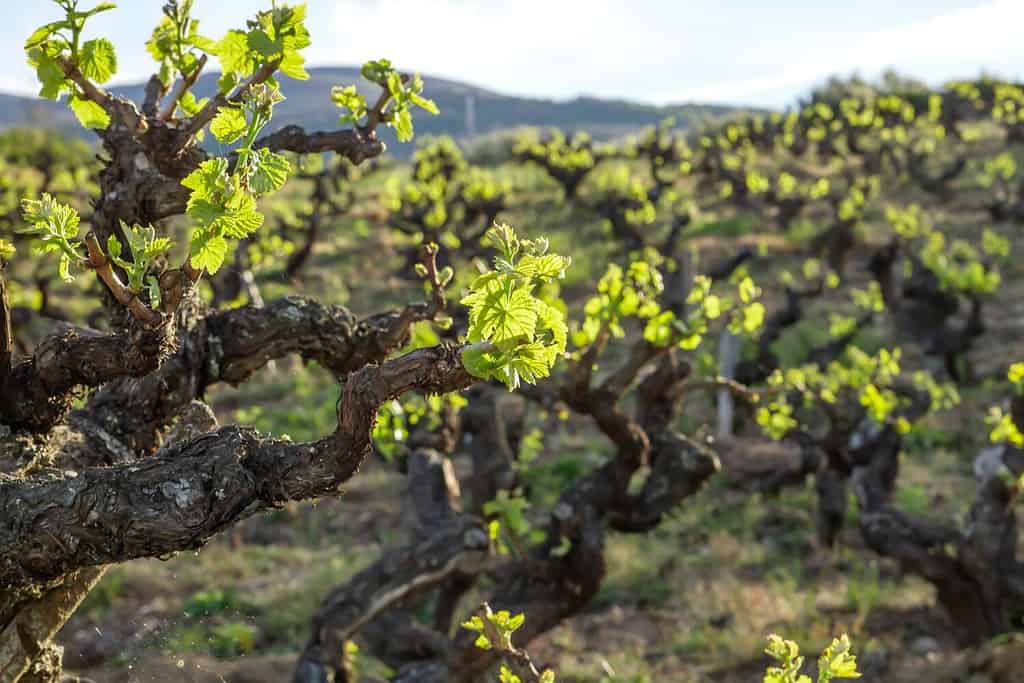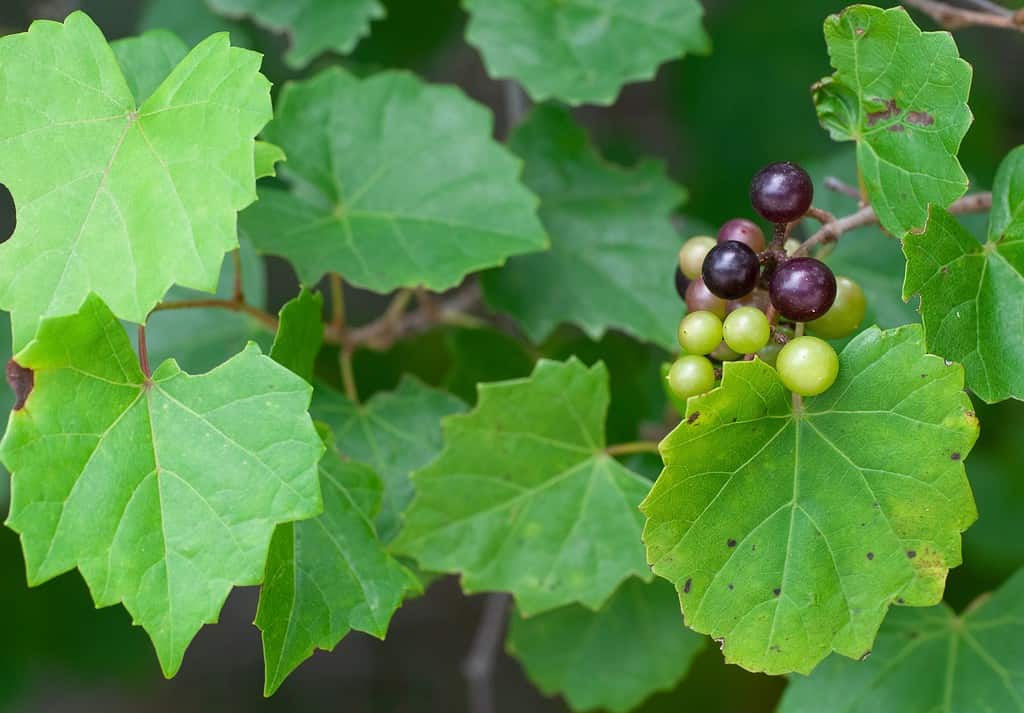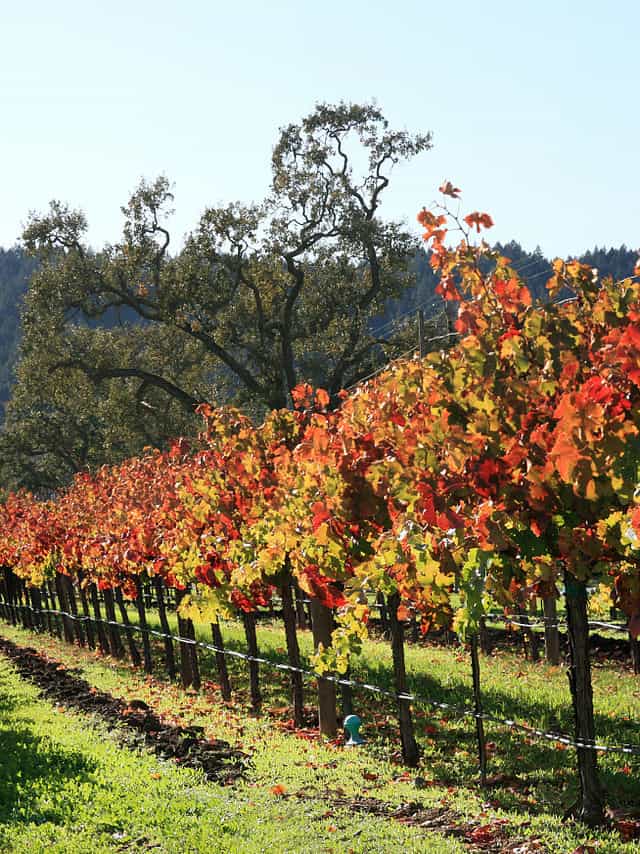Traditionally, the art of bonsai involves meticulous pruning and shaping of a tree to make it grow in miniature. But did you know that other types of plants can be used in bonsai as well? With enough time and persistence, you can create a grapevine bonsai that more resembles a tree than a vine. If you’re careful about how and when you prune and fertilize your bonsai, it will likely reward your efforts with grapes!
In this article, we’ll talk about the maintenance needed to keep these fast-growing vines in check and keep them thriving in miniature. If you’re looking for an exciting plant to use for bonsai, a grapevine may be a good choice for you.
| Botanical Name | Vitis sp. |
| Popular Species | Common grapevine (Vitis vinifera); muscadine grape (Vitis rotundifolia) |
| Water | Frequent watering is necessary, especially in hot weather. Keep soil evenly moist. Do not allow it to dry out. |
| Sunlight | Requires quite a bit of sunlight. Shelter from the harsh, direct afternoon sun. |
| Soil Type | Must be regularly fertilized and well-draining. |
| Indoor or Outdoor? | Does best outdoors, but can grow well indoors with a lot of bright, indirect lighting. |
| Beginner Friendly? | Beginners may struggle to keep up. These fast-growing plants require frequent maintenance and repotting. |
Popular Species for Grapevine Bonsai
Bonsai practitioners, when working with a grapevine, will usually choose one of two species: the common grapevine, Vitis vinifera, and the muscadine grape, Vitis rotundifolia. We’ll talk a little about them below.
Common Grapevine (Vitis vinifera)
The common grapevine, Vitis vinifera, is native across Europe and Central Asia. It is cultivated across the world for its sweet fruits that are sold whole or processed into various juices, wines, and oils. The fruits are not the only edible parts of the plant. The leaves, flowers, and sap of the grapevine are delicious as well and can have many culinary uses.
This fast-growing vine, with maintenance and persistence, can perform well as a bonsai. The woody stem thickens over time to more resemble a tree trunk than a vine. New growth is pliable and easy to shape and it responds well to pruning.
Because of their growth rate and the energy required to produce fruits, grapevine bonsai plants require frequent watering and fertilization. Although you won’t receive a bounty, careful work with the plant over several years is likely to result in a decent handful of grapes during the growing season.

New growth on older common grapevines. Years of growth and pruning, even at full size, produces twisted and gnarled trunks and interesting branches.
©jessicahyde/Shutterstock.com
Muscadine (Vitis rotundifolia)
The muscadine grape grows wild across the south and central United States and has been in cultivation for hundreds of years. Vines of this species normally produce green grapes that mature to a dark purple or black color. Some, however, often referred to as scuppernongs, produce greenish-bronze fruits that tend to be more tart.
If you’re wondering where to get your muscadine vine to use in bonsai, finding one shouldn’t be too hard. There are many cultivars of the muscadine grape available for purchase online and they will sometimes appear at local nurseries. If you’re lucky enough to live in a region where they grow wild, you can easily grow your muscadine bonsai from wild seed or cuttings as well. Like the common grapevine, muscadines are fast growers that require fertile soil and a lot of water.

Wild Muscadine grapevine,
Vitis rotundifolia. The dark, round grapes provide a beautiful contrast with the twisted branches and bright green foliage.
©Donna Bollanbach/Shutterstock.com
How to Care for Your Grapevine Bonsai
The fact that grapevines are very fast growers presents some unique challenges regarding their care. While these challenges are not insurmountable, you will need to be attentive in caring for your plant. We’ll talk about some of the growing requirements for your grapevine below.
Water
To keep up with its rate of growth and keep its roots well-hydrated, a grapevine bonsai will need frequent watering. You will need to monitor your plant’s soil and ensure that it never dries out completely. Remember that the soil volume of your bonsai pot is very small and will dry out quickly. In particularly hot climates, you may need to water daily to keep your plant hydrated.
While you will need to water your grapevine often, you will also need to be sure that you do not allow the soil to become waterlogged. Overwatering can create anaerobic soil conditions that leave your plant susceptible to various bacterial and fungal root infections. Aim for soil that is moist to the touch but isn’t wet.
Soil Type
Choosing the right soil is crucial. Your grapevine bonsai will need soil that is well-draining but also has a strong ability for storing water. Expanded shale is a great soil amendment for boosting pore size and water retention. It doesn’t break down, meaning you can reuse it when repotting your bonsai. You can combine it with equal parts pumice, lava rock, and calcined clay if desired to create a suitable mix for your grapevine.
Because your soil mix must drain quickly, you will want to help it retain moisture for as long as possible. Adding a top-dressing of decorative moss can help your soil retain water longer and therefore give your plant more time to take it up. It also gives you more styling elements to experiment with when planting your bonsai.
Repotting Your Grapevine Bonsai
The parts of your grapevine that are visible above the soil surface aren’t the only fast-growing ones. Grapevine roots grow rapidly and can quickly fill out the small volume of a bonsai pot. Because of this, you will need to repot your plant, or at least trim its roots, every couple of years. If you’re using a bonsai mix that contains pelleted clay or organic matter, which breaks down, you may need to report this frequently anyways.
To check whether your bonsai needs repotting, carefully tilt it out of the pot. You can use a root rake to help you get underneath the soil. If the plant’s roots are dense and wrapping around the perimeter of the pot, you may wish to increase your plant’s pot size. However, you can also keep your bonsai in the same pot.
To make more space in the pot and keep your bonsai healthy, you will need to trim its roots once they have filled out the pot. Gently rake away the soil using your root rake and carefully trim away the vine’s root mass. Take care not to trim more than one-half of the total root mass when performing a root trim. One-third is common.
Fertilization
Without access to the normal nutrient store that the Earth provides, your plant will need fertilization fairly regularly. You can use either solid or liquid fertilizers to feed your bonsai, but make sure that you apply whichever you choose at about half-strength. Apply fertilizer 2 or 3 times throughout the growing season.
Sunlight
Your grapevine bonsai will need a lot of sunlight to produce healthy growth, both above and below the soil. To produce its best growth, it will need 8 or more hours of sunlight during the growing season. However, harsh afternoon sun can scorch and damage sensitive leaves. The trick to ensuring that your plant receives enough sun without harm is to shade it through the hottest parts of the day. Make sure it gets full sun in the morning and evening when the heat and light are less intense. You can place your bonsai in a more exposed position when skies are overcast to allow it better access to light.
Placement
Because of the amount of sunlight they require, these plants thrive outdoors. In addition to sunlight, constant air movement and humidity changes can help prevent fungal infections on and between leaves. If you choose to place your grapevine bonsai indoors, be sure to place it near a window that receives plenty of light throughout the day. A south-facing window is best. Distance from the window will vary from season to season, but you should place your plant at least a couple of feet away to prevent burning.
In nature, these plants grow in temperate climates and can handle some cold. Grapevines need a winter dormancy period. Without the natural insulation of the ground, however, a potted grapevine bonsai is more susceptible to the cold. You will need to shelter your bonsai from frost and cold winds throughout the winter. Ideally, place your plant in a garage or basement where temperatures remain cold and keep its soil moist. After the danger of frost passes in the spring, you can bring your plant back outside. Both muscadines and common grapevines are deciduous and will lose their leaves in the fall. They spend their winter dormancy period leafless and regrow their foliage in the spring.

Both muscadines and common grapevines are deciduous and will lose their leaves in the fall. They spend their winter dormancy period leafless and regrow their foliage in the spring.
©Brocken Inaglory, CC BY-SA 3.0 <https://creativecommons.org/licenses/by-sa/3.0>, via Wikimedia Commons – License
How to Shape Your Grapevine Bonsai
Knowing how to care for your plant’s basic needs is paramount to your success in keeping your grapevine bonsai. The most important part of bonsai, however, is the harmonizing of plant health with shape and style. Proper pruning, defoliating, and wiring are all important parts of maintaining your plant’s small stature in a way that keeps it healthy and thriving.
Pruning
Depending on how you want to style your bonsai, the number of times you prune per season will vary. To keep growth in check, you may want to prune your grapevine bonsai two or three times throughout the summer growing season. You should allow a younger plant or one that you have recently collected, to grow for an entire growing season before starting to prune it. This allows the grapevine to establish itself in its pot and begin to develop its root system and trunk.
When pruning, defoliating, or both, it is best to remove no more than one-third of your plant’s total foliage. Removing too much at once reduces your plant’s ability to photosynthesize and therefore feed itself. Allowing branches to elongate and harden off before pruning them back will encourage denser, more frequent branching, called ramification. Pruning early in the year
Wiring
Wiring is a crucial element of bonsai styling. By wrapping wire around the branches of your bonsai, you will be able to bend them in whichever direction you choose. Over about six months, the branches of your grapevine bonsai will harden off and retain their positions on their own.
To remove the wire, carefully unravel it or cut it from the plant. The wire should not stay on the plant any longer than necessary. If left for too long, the wire can constrict your plant’s growth, harming it and leaving wire grooves along the branch where the plant has tried to grow around it.
The photo featured at the top of this post is © Ton Photographer 4289/Shutterstock.com
Thank you for reading! Have some feedback for us? Contact the AZ Animals editorial team.






